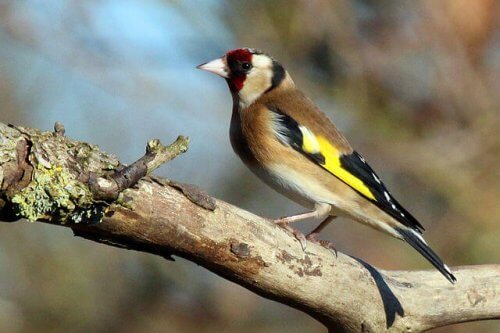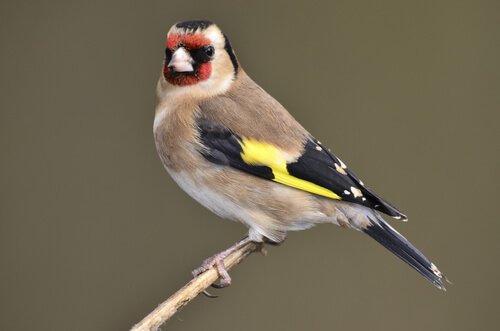How to Feed Goldfinch Chicks
Goldfinches are lovely birds that can be found all over the world. In Spain, you can hear them singing in every corner of the country. Sadly, this also means that it’s common to find goldfinch chicks that have fallen from their nest.
During mating season, these birds tend to have between two and three chicks and often have accidents. Continue reading this article to learn how to feed goldfinch chicks in order to give them the best chance of growing up and living freely.
Why do Goldfinch chicks fall out of their nest?
There are many reasons why chicks end up on the ground, whether it being on the street or on your patio. One reason is related to Charles Darwin’s law of “survival of the fittest”. The larger chicks shove the smaller ones out of the nest in order to receive more food.
Another reason is again related to Darwin. The mother might detect that the chick is sick or prone to illness. For this reason, she pushes the chick out of the nest to avoid getting the other chicks sick. A third reason is much simpler: the chick was trying to learn to fly and failed.
In any of these cases, if you are fortunate enough to find one of these birds alive, it’s time to play the role of a surrogate mother and feed them. Therefore, below you can find some advice about feeding Goldfinch chicks.

What do goldfinch chicks eat?
Goldfinches are granivores, which means they eat only seeds and a few flowers. In cities, they also tend to eat scraps of human food, as long as the pigeons haven’t already gotten there first.
With that said, if you want to help any fallen chicks, you need to remember that their diet is not the same during their entire life. In other words, as they get older, they need to eat different things, according to what their bodies require.
This is why the majority of birds that are rescued and fed at home tend to die unexpectedly or worse, not eat at all. However, there is no need to worry, with a little patience and the right tools, feeding goldfinch chicks can be very easy.
How to Feed Goldfinch Chicks
To begin with, you need to take the chick’s age into consideration. If it still is lacking feathers or is starting to molt, this can greatly affect what it needs to eat.
First, after bringing the chicks home, create some sort of handmade incubator for them to rest in. It needs to be a place where they feel safe just like if they were in their nest. The best option is an appropriately-sized container.

Place a towel or a cloth on the bottom of the container and try to keep them warm with whatever means you have available. This way the chicks will feel safe and relax enough that you’ll be able to hold them without having too much difficulty.
Once finish getting them situated, the correct way to feed a chick is by hand-feeding it, using a syringe or in some other similar way that allows you to place the food into its beak. Try to get a mixture of chick feed from a pet shop and combine it with a little canary seed.
Things to Take into Consideration
If the chicks won’t eat from your hand, you’ll need to use a needleless syringe. First, sterilize it with hot water so you don’t accidentally get them sick. Then, use the tip as though it were their mother feeding them.
Never directly touch their beak because you may injure them. Gradually feel them until they close their beaks because this indicates that they’re full. Repeat this process every hour and after a few days leave them fruits and nuts so they can learn to feed themselves, and also so their beak harden.
Once they learn to fend for themselves, then sadly, it’s time to return back to the wild. Goldfinches are wild birds and don’t do very well in captivity.
So, now you can see that feeding goldfinch chicks is quite simple and not complicated at all. If you ever come across one in the street and decide to look after it, now you know what to do.
All cited sources were thoroughly reviewed by our team to ensure their quality, reliability, currency, and validity. The bibliography of this article was considered reliable and of academic or scientific accuracy.
- Bazán, J. (2016) La cría en cautividad de aves Fringílidas. Gobierno de las Islas Baleares. Consejería de Medio Ambiente, Agricultura y Pesca. Recuperado el 20 de marzo de 2022, disponible en: https://participa.gencat.cat/uploads/decidim/attachment/file/776/manual_cria_captivitat.pdf
- Agencia Estatal Boletín Oficial del Estado. (2011) Decreto-ley 2/2011, de 15 de noviembre. Recuperado el 20 de marzo de 2022, disponible en: https://www.boe.es/buscar/doc.php?id=BOE-A-2011-20183
This text is provided for informational purposes only and does not replace consultation with a professional. If in doubt, consult your specialist.